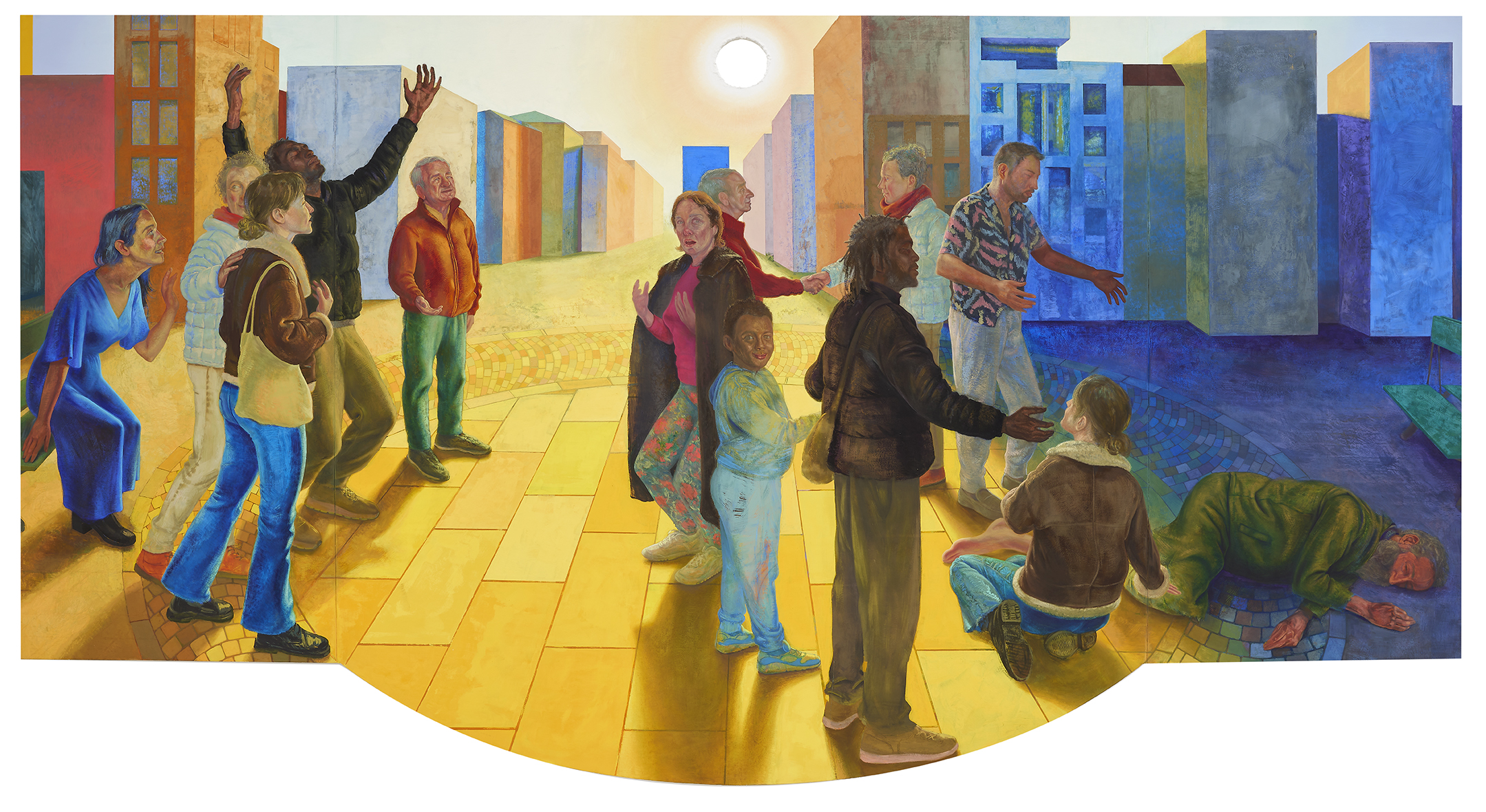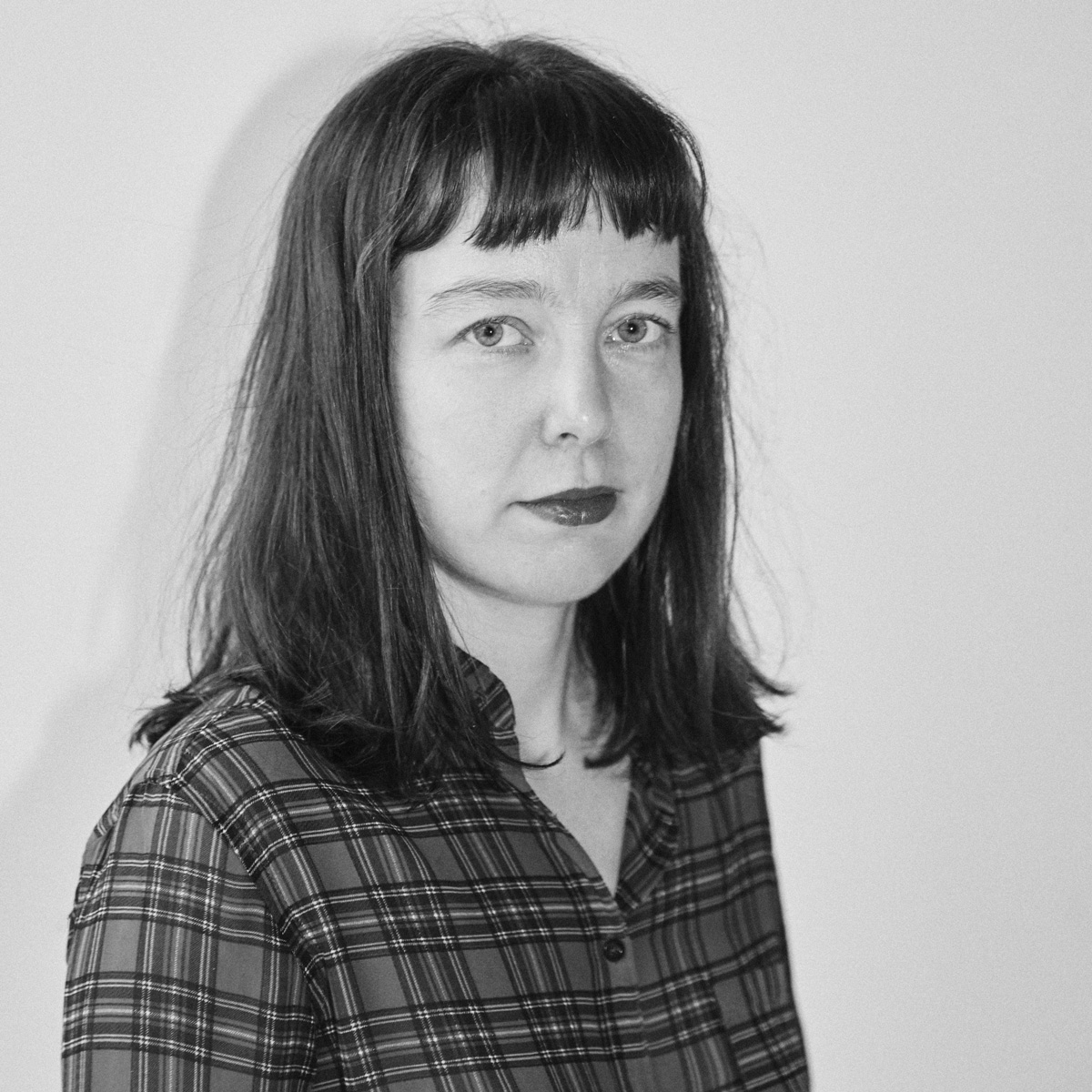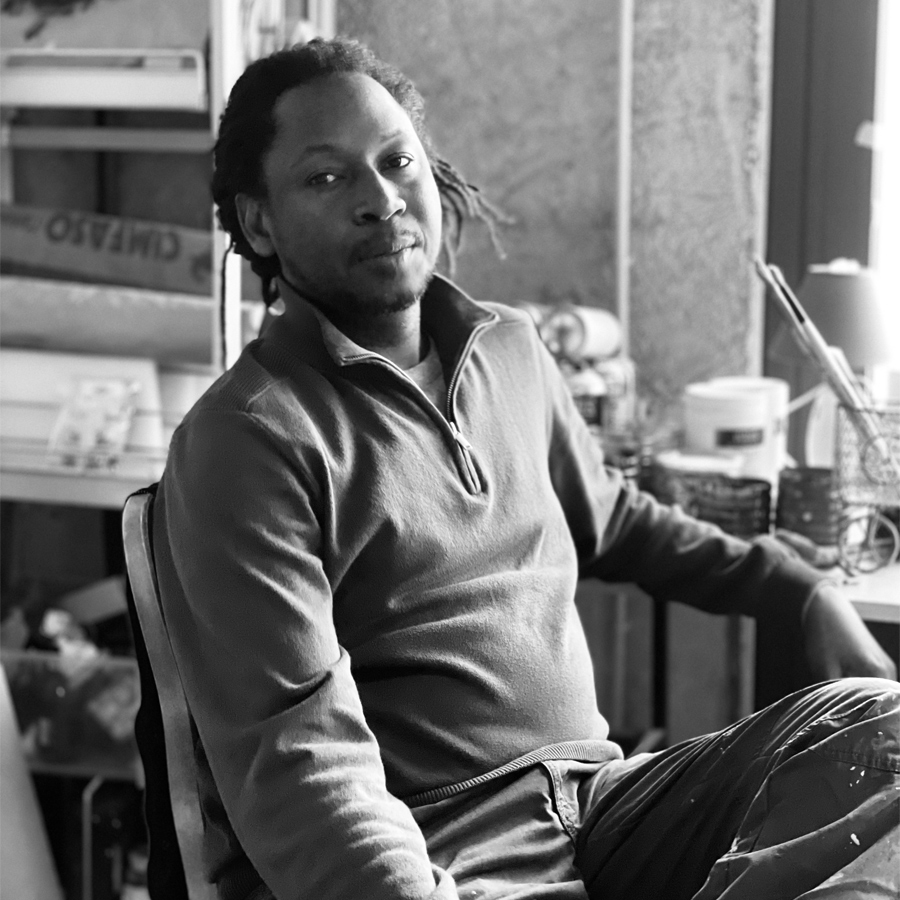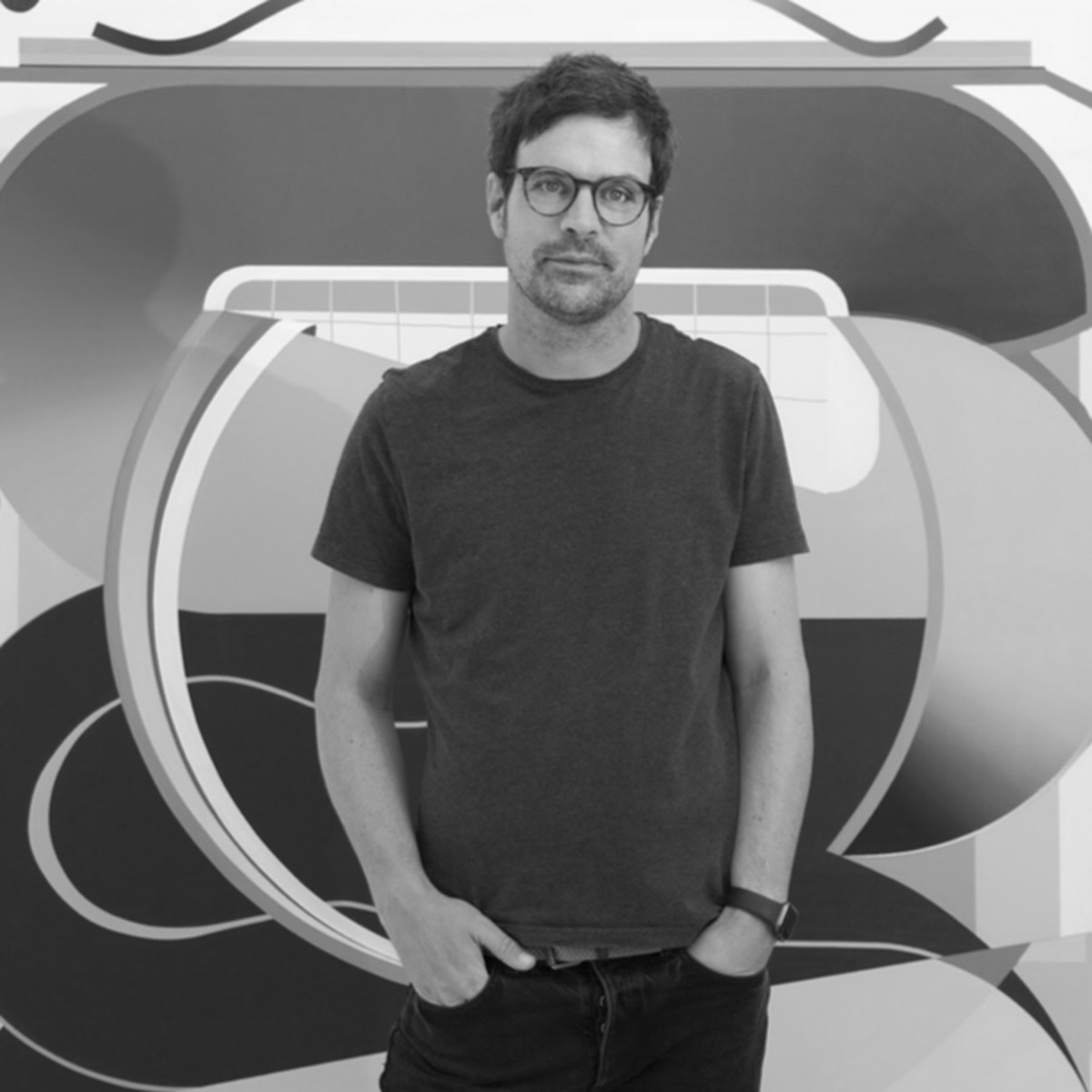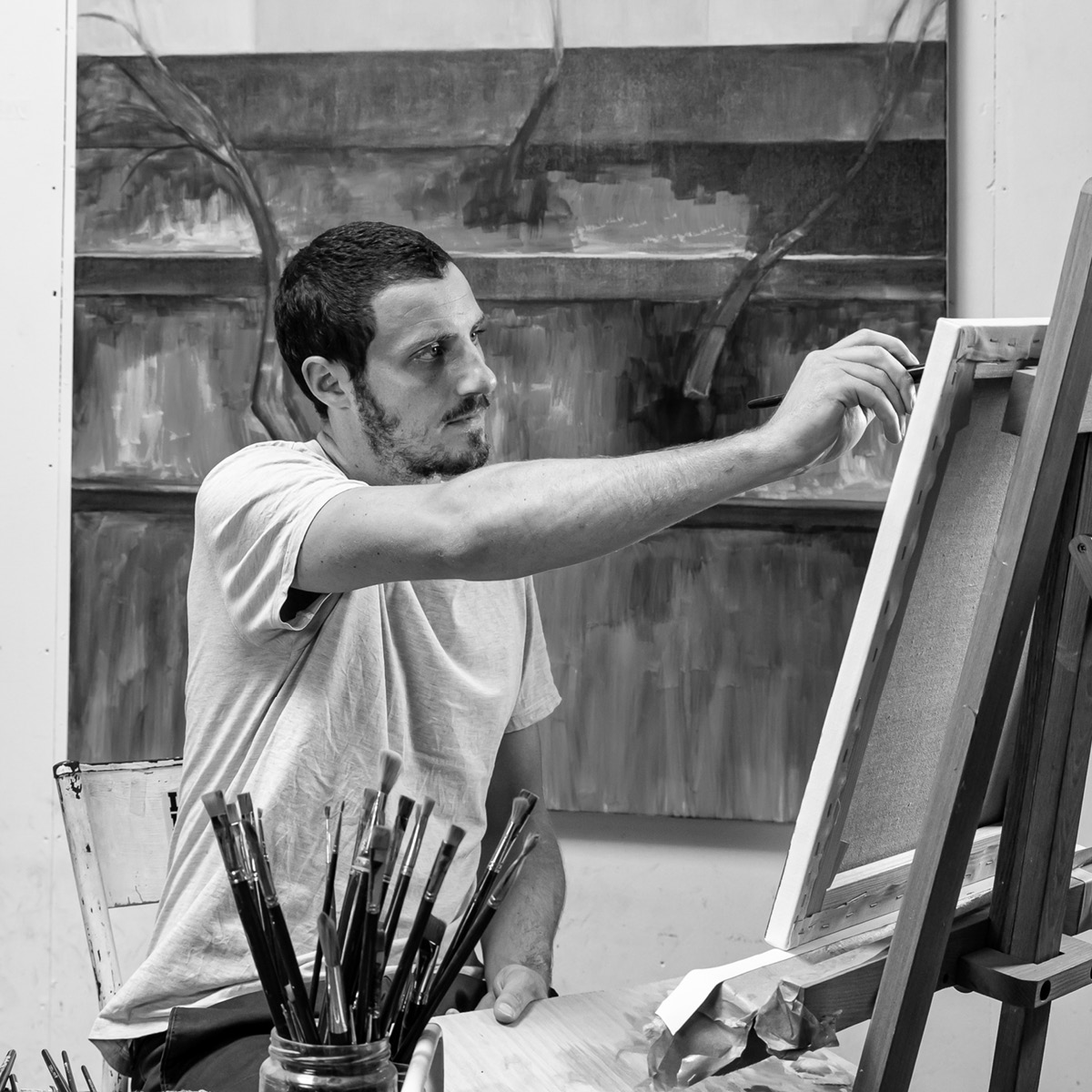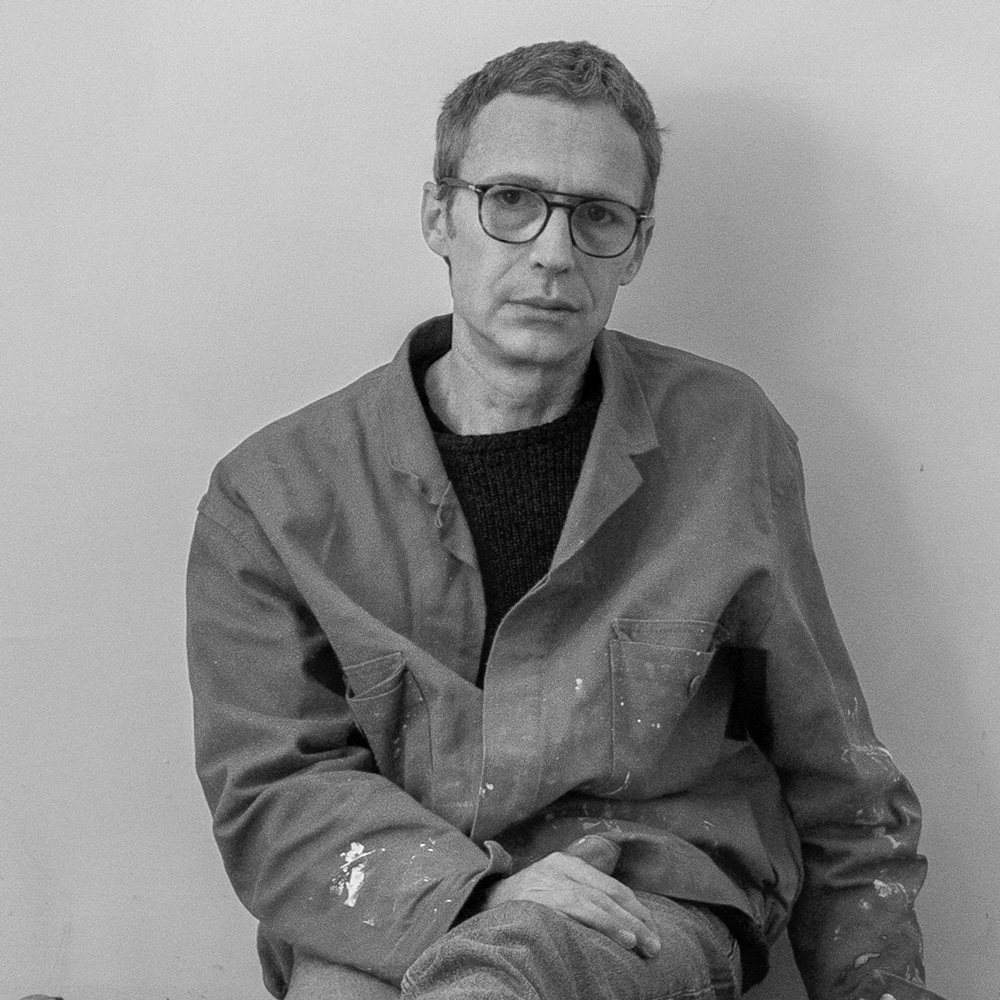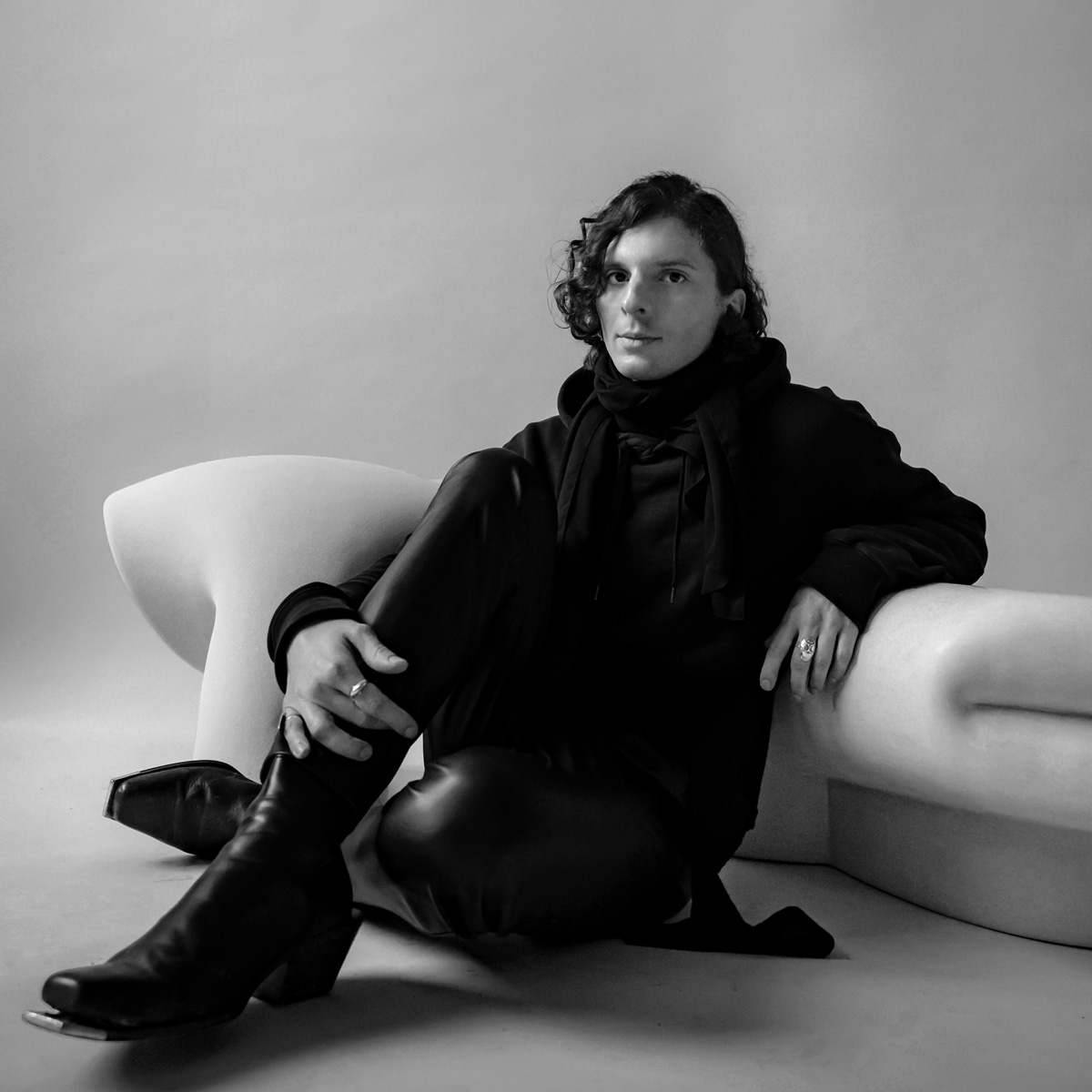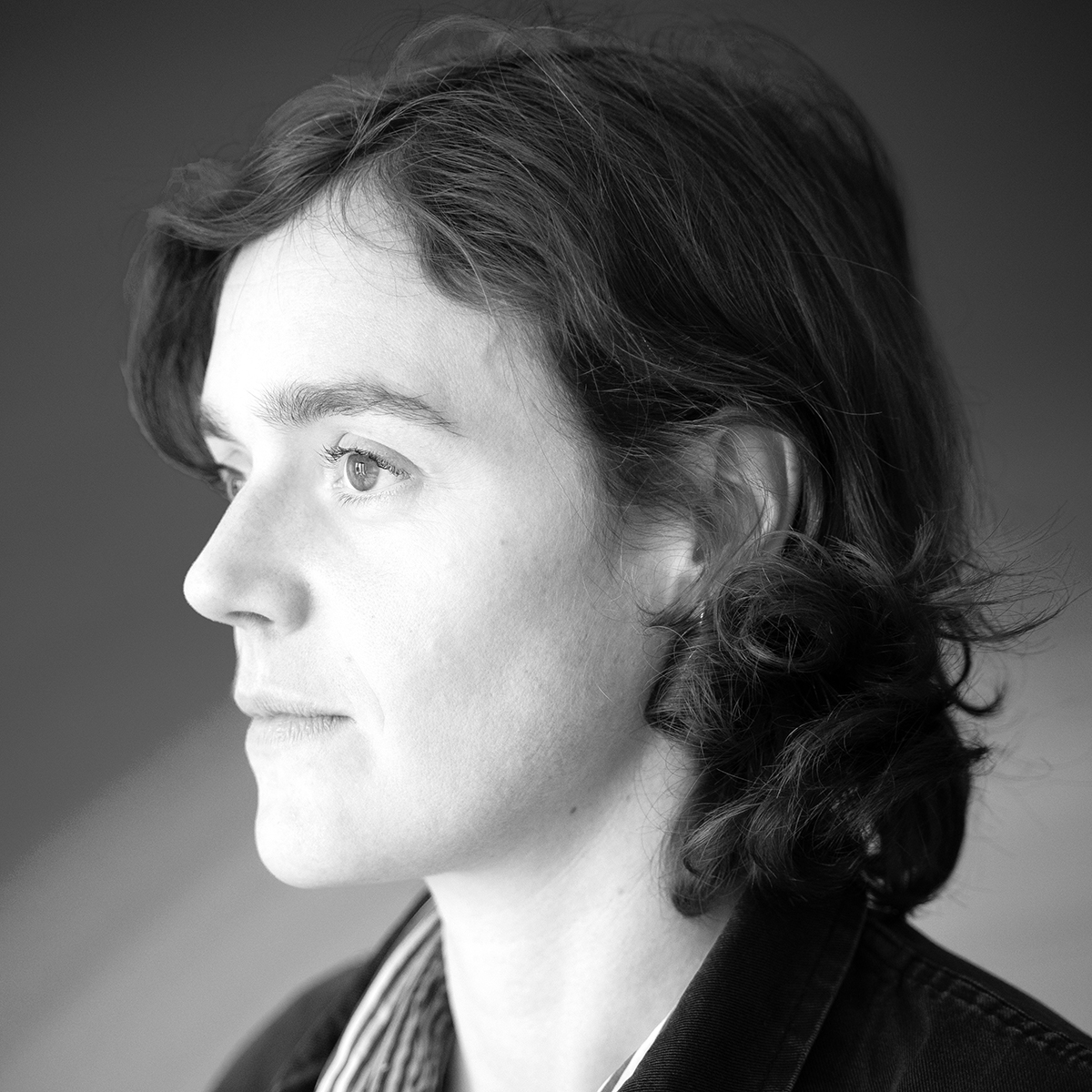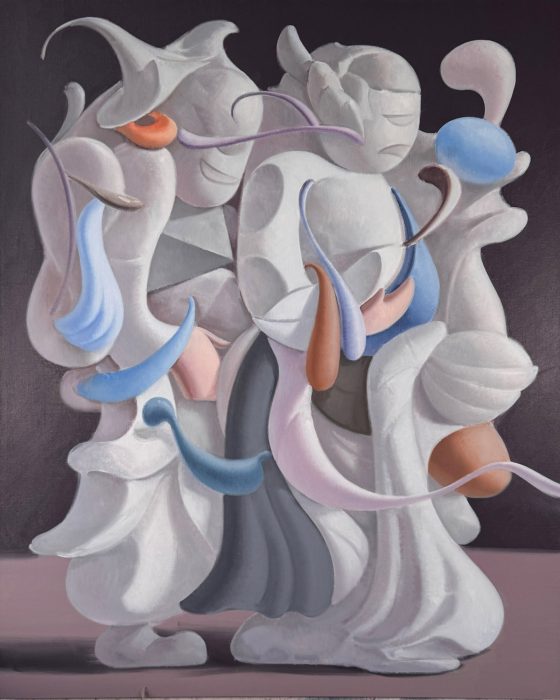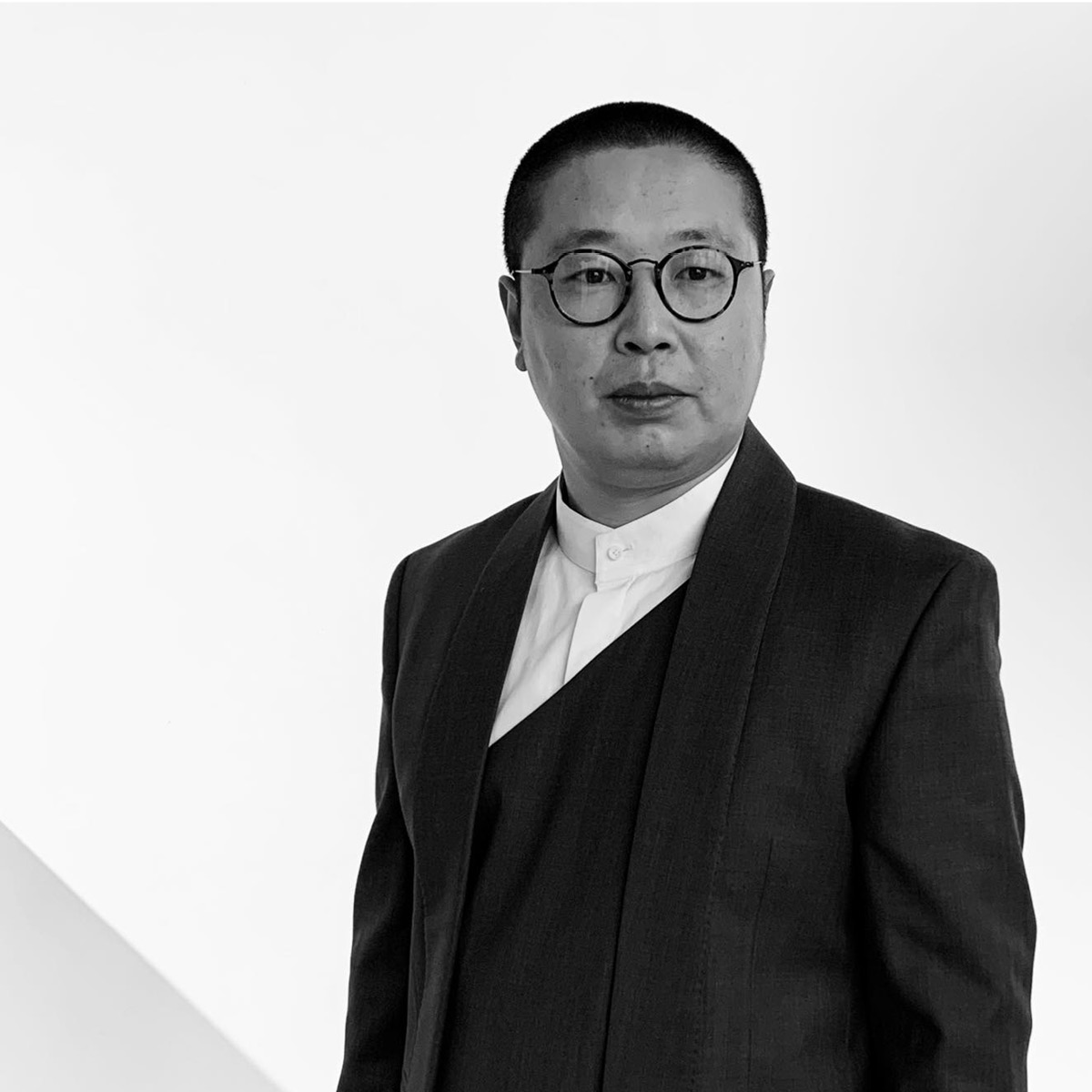ART PARIS 2025
Marion Bataillard, Souleimane barry, bernhard Buhmann, Dorian Cohen, jacques Julien, bence Magyarlaki, Anna Nero, claire nicolet, Fu site, qi zhuo
APR 3rd - APR 6th, 2025
Grand palais, paris, france
Booth E11
Marion Bataillard represents architecture and dance. Transfigured urbanity, expressive bodies, vibrant colors, the concrete framework of large cut-out panels… From the outset, their geometrics form a frame, serving as a counterpoint to the movements and expressions of the utterly human figures she shows. Because nature doesn’t make straight lines, the rectilinear brought in by man both balances and constrains the irreducible meandering of the body.
This is precisely what the deployment of spaces seems to emphasize: our bodies, affected in different ways. Marion Bataillard’s characters are intriguingly polysemous. Tinged with ordinariness and brimming with desire aching to be fulfilled, their attitudes hint at a symbolism requiring interpretation. Calm, smiling, or suffering, their countenances offer an unsettling presence that captures the gaze. Could it be that these faces are the real subjects of her paintings? At times, their grotesque grimaces evoke the tronies in Dutch painting of the Golden Age.
If Marion Bataillard is clearly concerned with situating her art in history, she is also engaged in a pictorial process that leaves room for the unknown and for experience. The idea is conditioned by a format, by the singularity of a model she invites to pose, or by the uncertainties of her current technique, tempera. Her material is increasingly pigmented, matte, and solid. The colors are bolder than ever, even becoming autonomous within their expanding fields, opened up by the singular shapes of the panels.
Text by Hillel Schlegel
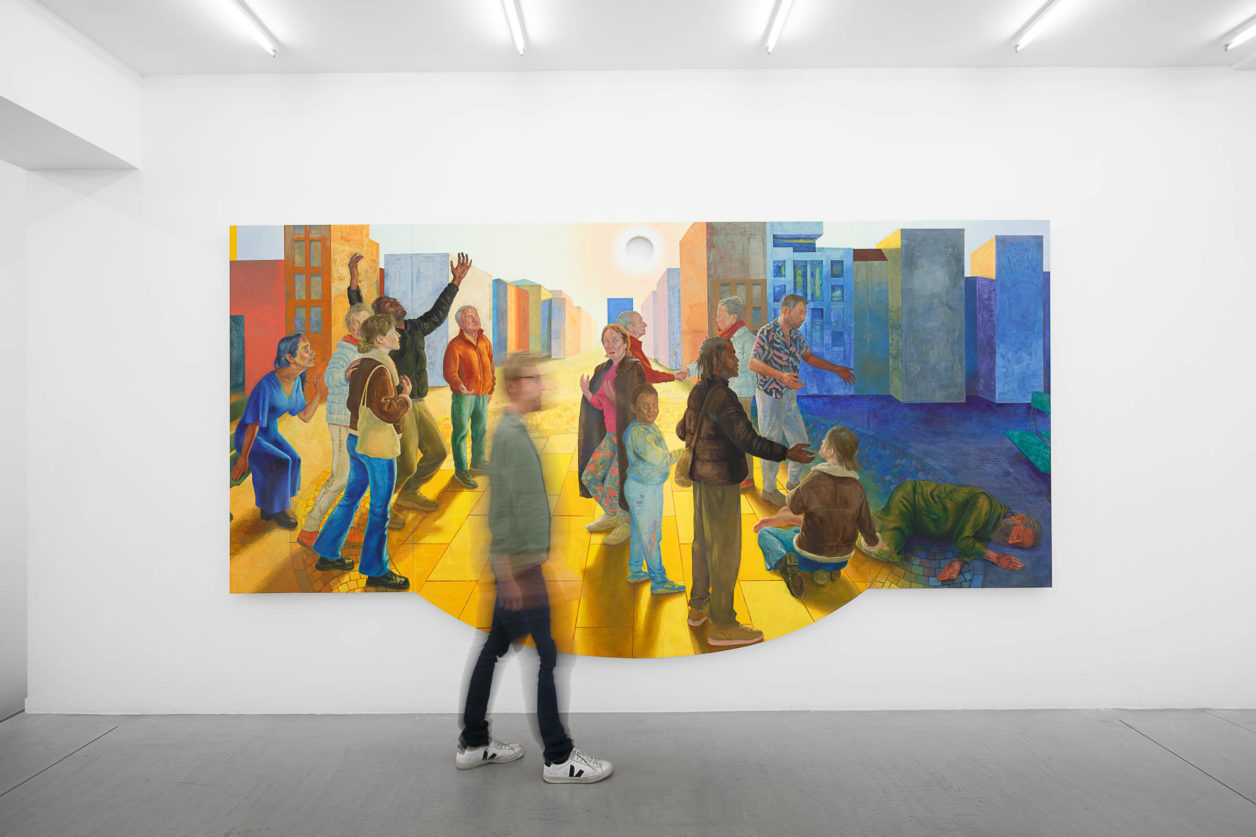
Marion Bataillard is a French painter born in 1983. She studied at the École Supérieure des Arts Décoratifs de Strasbourg under Manfred Sternjakob and Daniel Schlier, then at the Leipzig School of Art in Neo Rauch’s class; she lived in Berlin until 2013. In 2015, she received the Grand Prize of the 60th Salon de Montrouge. She now lives and works in Ardèche. In a few years, Marion Bataillard has risen to the forefront of young contemporary French painting.
Working between Burkina Faso and France, Souleimane Barry weaves rich patchworks of memories, symbols, and fantasies. His paintings and mixed media works reveal what he describes as a twilight world, populated by characters he encounters during his travels between West Africa and Europe.
These portraits are accompanied by elements drawn from African spiritual traditions and the experience of migration. Among the recurring motifs, one can find animals, globes, and checkered surfaces. Barry’s eclectic style is inspired by his training as a poster painter, as well as his lessons with figures such as the playwright, director, and actor Jean-Pierre Guingané.
Contrary to the widely held belief that painting is a divine gift, Barry Souleymane is one of the few Burkinabé painters who has developed a solid pictorial culture, combining tradition and modernity with great mastery.
Souleimane Barry was born in 1980 in Burkina Faso. He underwent several trainings, including at the calligraphy workshop in Bobo-Dioulasso, as well as at the advertising billboard calligraphy workshop, which allowed him to develop his eclectic style. Several drawing and painting programs in Burkina Faso also helped him perfect his pictorial technique. He has been exhibited internationally and has participated in several art fairs such as AKAA and Art Paris.
Educated in sociology, Bernhard Buhmann probes the dynamics of modern society. Buhmann’s paintings, characterized by sophisticated geometric compositions and color gradients inspired by digital graphics, weave a visual tapestry where abstraction and portraiture meet and transform one another.
He blurs the boundaries between traditional painting and modern digital aesthetics. From a distance, his works appear to have been generated by a machine due to their precision. However, as the viewer approaches, they discover the traces of the artist’s meticulous work. He ensures the preservation of a human and organic dimension in his exploration of contemporary society.
Buhmann’s works question the role of the individual in an increasingly technology dominated world and mediated realities. They suggest a kaleidoscopic universe where portraits transform, much like the subjects of his exploration.
Bernhard Buhmann was born in 1979 in Bregenz, Austria. Holding a master’s degree in sociology and communications sciences from the University of Vienna, he also studied painting at the University of Applied Arts Vienna. Today, he lives and works in Vienna, where he continues to fuel his work with a constant reflection on the social, political, and technological issues of our time. His work is not only exhibited but also integrated into numerous collections worldwide, from New York to Austria to Dubai, reflecting his international recognition and the impact of his work on the global art scene.
Through a figurative realistic painting of classical tradition, Dorian Cohen focuses on creating urban imagery between landscapes, mirages, and naturalistic genre scenes. Organized into a series of images, his work aims to construct a genealogy of urban narratives by studying the pictorial and narrative mechanics at play between each of these series.
Following training in urban planning, Dorian Cohen developed a taste for urban space and sought to challenge its rules while marking his romantic character. He blends realism with the fantastic and delights in creating illusions and doubts in the observer. Halfway between still life, his urban objects create a tension between the mineral and the vegetal. He aims to create micro-narratives that bounce from series to series, forming a kind of pictorial genealogy. From his artistic inspirations, he has created his own language.
Dorian Cohen is a young French painter born in 1987. He lives and works in Paris. He has a degree in urban design and engineering and is self-taught as a painter. His paintings were revealed to the art world in 2017 during the 62nd Montrouge Salon. In 2018, he won the Colas Foundation Award and in 2019 he was nominated for the 10th edition of the Sciences PO Contemporary Art Award.
Jacques Julien’s works attempt to combine the analytical and poetic dimensions with humour. For Jacques Julien, a sculpture is a starting point towards the invisible double, the missing body or the hollow figure. Since the 1990s, the artist has been developing a reflection on form: its elaboration, its realization and its abandonment. As a result, his work revolves around the practice of sculpture in the studio, where time passes and is lost in the manner of the life that unfolds there, where the work is a series of empirical experiments that attempt to find a form of autonomy in keeping with the territory that gave birth to it, the relationship to space remaining at the centre of his questioning.
Jacques Julien was born in 1967 in Lons le Saunier, he lives and works in Paris and Montdidier (80). He studied at the Ecole des Beaux-Arts de Nîmes and at the Ecole des Beaux Arts de Grenoble. He is a lecturer at the Ecole Nationale Supérieure d’Architecture de Paris la Villette. In 2021, he was in the art residency at the Villa Medici, the French Academy in Rome. Since 2000, his work has been the subject of major exhibitions at the CRAC Occitane, the Frac Normandie and the Domaine de Chamarande. His works are also in numerous public collections such as the FNAC or the Frac Bretagne, Bourgogne, Pays de la Loire…
The body and architecture are central to Bence Magyarlaki’s practice. Their works encapsulate the tensions within movement, questioning the patriarchal values reflected in our societal structures and the control on our identity and its desires. Their sculptures are transformative in nature, addressing issues of sexuality, identity, fragility, power and social change.
Magyarlaki recovers foam and parts of abandoned furniture, transforming their geometry into new anthropomorphic gestures. The memory of the body is always present, addressing recollections of intimacy, both of one’s own body and those of others. They use the traditional Moroccan plastering technique of Tadelakt (which means to caress). A long and precise process that involves superimposing and polishing successive layers, then smoothing out imperfections until the artist’s hand disappears. A flexible outer shell is thus created, expanding and con-tracting with changes in atmospheric temperature making it feel like a moving, breathing surface. An organic body that is alive.

Exhibition view ‘At Saturn’s Cusp’
Bence Magyarlaki (b. 1992) is a Hungarian artist currently based in Paris. Magyarlaki graduated with first class honours from BA (Hons) Fine Art at Central Saint Martins, London in 2017 and has since been exhibiting internationally in the UK, France, Morocco, Portugal, Turkey and Australia. Their latest body of work has been supported by Montresso Art Foundation in Marrakesh. Their work was nominated for The MullenLowe NOVA Awards (2017), and The International Takifuji Art Award (2017).
Anna Nero‘s work explores various painting techniques as well as the possibilities of image-making and representation. Her approach navigates between strict geometric forms and spontaneous brushstrokes, blending structure and intuition. Central to her practice is the transformation of paint into both object and space. She elevates the material itself, considering it not only as a tool but also as a subject with its own autonomy. She also incorporates references to art history in a postmodern and playful manner.
Anna Nero grew up in a Jewish family, surrounded by Russian Orthodox Christianity and Catholicism. This diversity led her to become interested in the different ways religions and cultures interact with images, objects, and icons. While Judaism forbids the worship of images, believers of the Russian Orthodox Church venerate icons. She situates her work within this divergence, seeking to represent the indefinable and contextualize painting between the sacred and the profane.
Sexuality also plays a crucial role in her work, addressing themes such as kink, fetishism, bondage, and control. Her exploration of sensitive and erotic relationships between humans and objects has led her to create objects herself. Recently, she ventured into ceramics, a natural progression of her exploration of objects in her paintings. Her sculptures resemble jewelry, design objects, toys, or sex toys, often familiar yet non-functional.
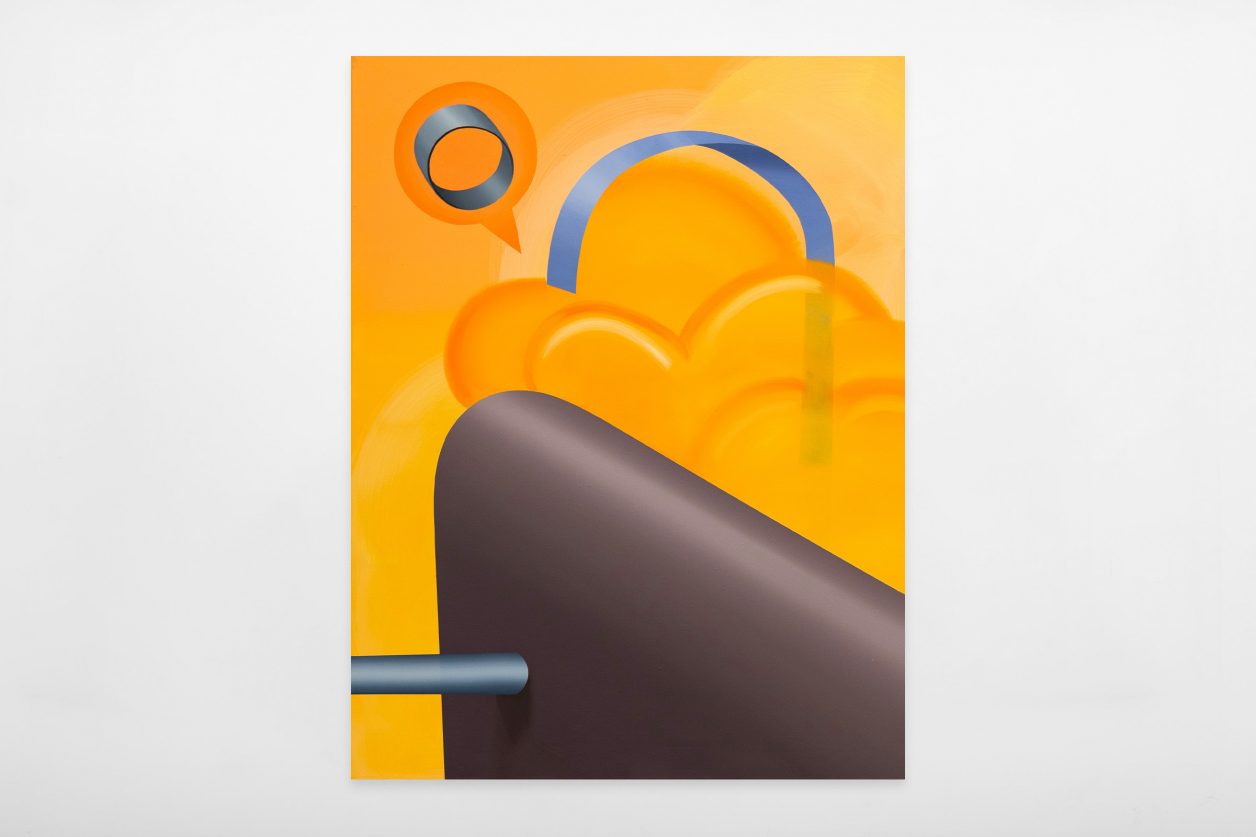
Anna Nero (*1988) earned her MFA from the Academy of Fine Arts Leipzig in 2015, followed by post-graduate studies with professor Heribert C. Ottersbach. Her artwork has been showcased in solo exhibitions in the United States, Germany, and Italy, as well as in numerous group exhibitions worldwide. She is also involved in running the Frankfurt-based project and exhibition space MARS. In 2022, Nero served as a guest professor at the Art Academy Mainz, Germany. Her pieces are featured in private and public collections across Europe and the United States, including notable institutions like G2 Kunsthalle, the Museum of Fine Art Leipzig, and the public art collections of various German cities. She is currently a guest professor at Burg Giebichenstein, in Halle.
Claire Nicolet explores, through painting, drawing, and printmaking, an intimate universe where nature and autofiction intersect. Her works testify to the solitude of a natural world often devoid of human presence, questioning our relationship with the environment. Influenced by Chinese cosmology, she uses recurring motifs, such as clouds, waves, and trees, which she represents with great precision through clear and meticulous lines.
Her work, primarily created with acrylic and vinyl on wood or canvas, is characterized by structured, often geometric compositions where grid lines serve as the foundation for more organic forms. Each stroke becomes a form of writing, a sign that invites reflection. Through her paintings, Claire Nicolet reopens the dialogue between the visible and the invisible, between nature and introspection, offering a visual experience where rigor and freedom coexist.
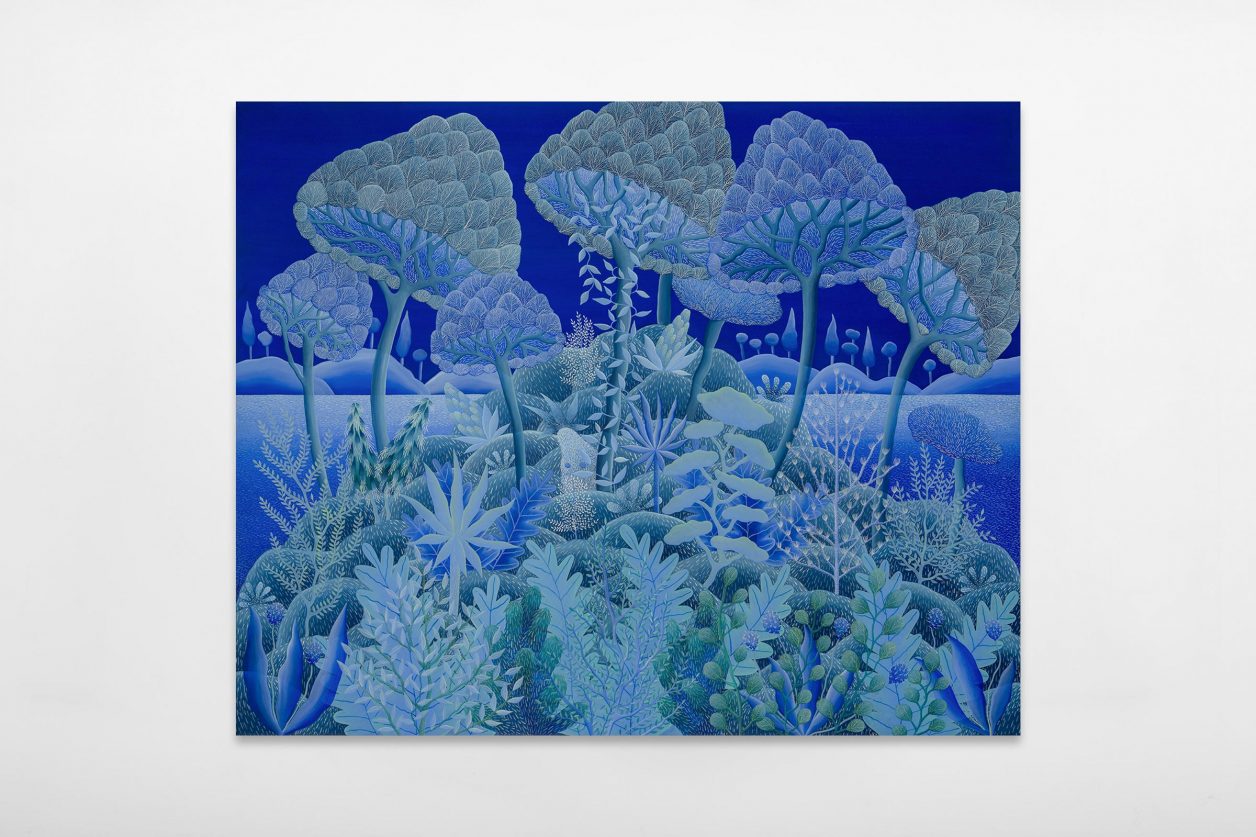
Born in Pontarlier, Claire Nicolet lives and works in Paris. She graduated from ESAIG Estienne (Arts and Crafts, specializing in Printmaking) and from the École des Beaux-Arts in Paris in 2015 in the Jean-Michel Alberola studio. Initially trained in printmaking, drawing, and the creation of written and illustrated books, she later turned to painting. In 2018, she won the Yishu 8 France Prize and undertook a several-month residency in Beijing in 2019. In 2022, she exhibited at the Galerie du Jour (Agnès b. Foundation) and created a monumental fresco for the open-air theater in the city of Nanterre. In 2023, she embarked on a residency at sea aboard the Tara schooner as part of the Tara Europa expedition by the Tara Ocean Foundation.
Here Fu Site focuses on the individual form: clusters of different textures are interwoven, superimposed, interlocked and together they form an image that is difficult to define, similar to a sculpture or the body of a fictitious creature. By adding eyeballs, he gives the form an anthropomorphic and humorous quality.
Through his fictitious creatures and scenes, he attempts to take on the complex realities of the contemporary world, provoking discussions on the relationship between the organic and the inorganic, the abstract and the figurative, the borderline and the excessive, as well as philosophical reflections on the cosmos and what remains to be known.
Fu Site was born in the Liaoning province (China) in 1984. He graduated from the Tsinghua University in Beijing (2006), the École des Beaux-Arts in Versailles (2011) and the École Supérieure d’Art du Nord-Pas-de-Calais (2014). In 2013 he was awarded with the first Canson Prix Art School painting award.
Qi Zhuo‘s approach is grounded in the concept of cultural collision. The intersection of Chinese and Western cultures serves as a foundational element in their work, encompassing linguistic, historical, and traditional aspects in a playful approach.
« Using blown glass, the artist “restores” Buddhist statues erected during the five dynasties and ten reigns that marked the history of China (A.D. 907-960). […] Over the years, these figures gradually became detached from their original functions, haunting Zhuo Qi like ghosts. Indeed, for the artist, they have become a universal language or, more broadly, a metaphor for time and space, which he falsely restores using materials that are temporally and geographically distant. […]
Through his works, Zhuo Qi lowers the barrier between the sacred and the profane, blending notions of reverence and irreverence. »
— « Seeking triumph in defeat » – Text by Baiyu JU
Qi Zhuo was born in 1985 in Fuxin (Liaoning province, China). He graduated with honors from the Le Mans Higher School of Fine Arts (the DNSEP Diploma), did the post graduate program KAOLIN of the ENSA Limoges in France and the Geneva University of Art and Design in Switzerland, he has been working and living in France since 2008. He did a residency at the Fondation Martell in Cognac, France at the end of 2020.
